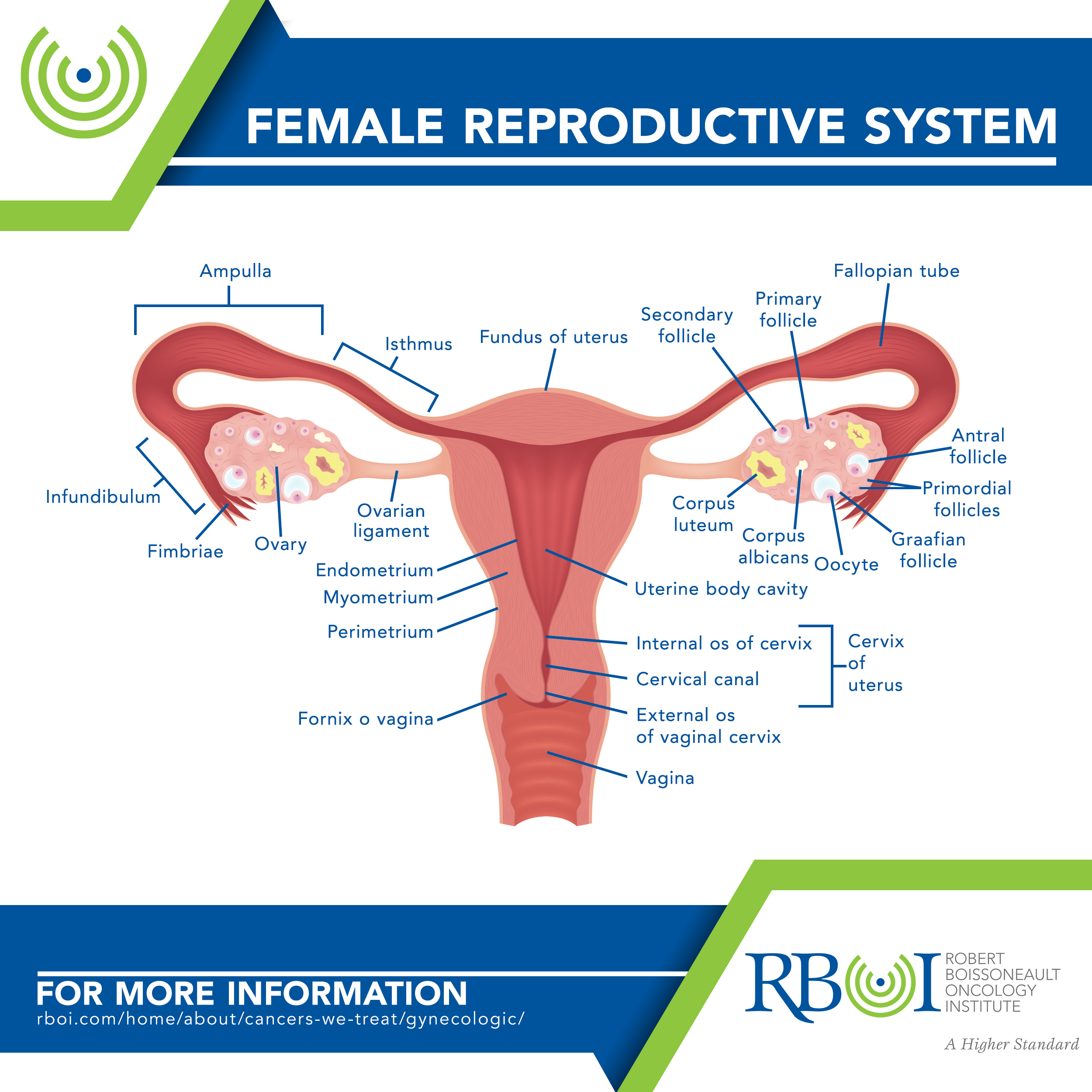Uterine Cancer
Uterine cancer is the most common cancer occurring in a woman’s reproductive system. It is the fourth most common cancer for women in the United States.
-
Forms of uterine cancer
Endometrial cancer (also called endometrial carcinoma) starts in the cells of the inner lining of the uterus (the endometrium). More than 95% of uterine cancers are carcinomas. Cancer of the endometrium is different from cancer of the muscle of the uterus, which is called sarcoma of the uterus.
Uterine leiomyosarcoma (LMS) tumors start in the muscular wall of the uterus (the myometrium). They are by far the most common type of uterine sarcoma. These tumors can grow and spread quickly.
Endometrial stromal sarcoma (ESS) tumors start in the supporting connective tissue (stroma) of the lining of the uterus (the endometrium). These cancers are rare.
Undifferentiated sarcoma cancers may start in the endometrium or the myometrium. They grow and spread quickly and tend to have a poor outlook.
-
Risk factors for uterine cancer
Age, Diabetes, Endometrial hyperplasia, Genetics, Hormone replacement therapy, Number of menstrual cycles, Obesity/diet, Other cancers, Ovarian tumors, Polycystic ovarian syndrome (PCOS), Race, Radiation therapy, Tamoxifen
Age — Uterine cancer most often occurs in women over 50; the average age is 60.
Diabetes — Women may have an increased risk of uterine cancer if they have diabetes, which is often associated with obesity.
Endometrial hyperplasia — Endometrial hyperplasia is an increased growth of the endometrium. Mild or simple hyperplasia, the most common type, has a very small risk of becoming cancer. “Atypical” hyperplasia carries a higher risk. If not treated, simple atypical hyperplasia turns into cancer in about 8 percent of cases, while the risk of complex atypical hyperplasia (CAH) becoming cancer may reach 29 percent of cases.
Genetics — Uterine cancer may run in families where colon cancer is hereditary. Women in families with hereditary nonpolyposis colon cancer (also called Lynch syndrome) have a higher risk for uterine cancer. In addition, women who have had a type of eye cancer called retinoblastoma (caused by being born with an abnormal copy of the RB gene) have an increased risk of uterine leiomyosarcomas.
Hormone replacement therapy— Women who take hormone replacement therapy (HRT) after menopause, especially if they take estrogen alone, have an increased risk of uterine cancer. The risk is lower for women who take estrogen with progesterone.
Number of menstrual cycles — Women who started having their periods before age 12 and/or go through menopause later in life have an increased risk of uterine cancer. Women who have never been pregnant also have an increased risk of uterine cancer.
Obesity/diet — About 70% of uterine cancer cases are linked to obesity. Fatty tissue in women who are overweight produces additional estrogen, a sex hormone that can increase the risk of uterine cancer. Women who eat foods high in animal fat may also have an increased risk of uterine cancer.
Other cancers — Women who have had breast cancer, colon cancer, or ovarian cancer have an increased risk of uterine cancer.
Ovarian tumors — A certain type of ovarian tumor, the granulosa cell tumor, can create high estrogen levels. The resulting hormone imbalance can stimulate the endometrium and lead to endometrial cancer.
Polycystic ovarian syndrome (PCOS) — Women with PCOS have abnormal hormone levels, such as higher androgen (male hormones) and estrogen levels and lower levels of progesterone. The increase in estrogen relative to progesterone can increase a woman’s chance of getting endometrial cancer.
Race — White women are more likely to develop uterine cancer than women of other races/ethnicities. However, uterine sarcomas are about twice as common in African-American women as they are in white or Asian women. African-American women also have a higher chance of developing advanced cancer. Black and Hispanic women have a higher risk of developing aggressive tumors.
Radiation therapy — Women who have had previous radiation therapy for another cancer in the pelvic area (the lower part of the abdomen between the hip bones) have an increased risk of uterine cancer.
Tamoxifen — Women taking the drug tamoxifen (Nolvadex) to prevent or treat breast cancer have an increased risk of developing uterine cancer. The benefits of tamoxifen usually outweigh the risk of developing uterine cancer, but all women who are prescribed tamoxifen should discuss the benefits and risks with their doctor.
-
Symptoms of uterine cancer
Abnormal vaginal bleeding, ranging from a watery and blood-streaked flow to a flow that contains more blood. Vaginal bleeding, during or after menopause, is often a sign of a problem. For premenopausal women, this includes menorrhagia, which is an abnormally heavy or prolonged bleeding, and/or abnormal uterine bleeding (AUB). This is the most common symptom of endometrial cancer
Unusual vaginal discharge with no visible blood
Abnormal Pap test results
Difficulty or pain when urinating
Pain during sexual intercourse
Pelvic pain and/or a mass
-
How is uterine cancer treated with radiation?
Radiation therapy is most often given after surgery to destroy any remaining cancer cells.
Radiation therapy is occasionally given before surgery to shrink the tumor.
Radiation therapy is a main treatment option in women who cannot have surgery.
Radiation therapy may be used to shrink a tumor that causes pain and swelling. This is called supportive or palliative care.
Radiation therapy options for endometrial cancer may include external beam radiation therapy (EBRT) directed toward the whole pelvis, or internal radiation applied only to the vaginal cavity (vaginal brachytherapy). In cases where both are used, external beam radiation is usually given first, followed by the brachytherapy.

Click here to learn more about RBOI’s radiation treatment options
Click here to watch a walk-through of what is involved in radiation treatment at RBOI
More extensive information about uterine and other cancers may be found at these sites:
American Cancer Society: Cancer.org
American Society of Clinical Oncology: Cancer.net
National Cancer Institute: Cancer.gov
